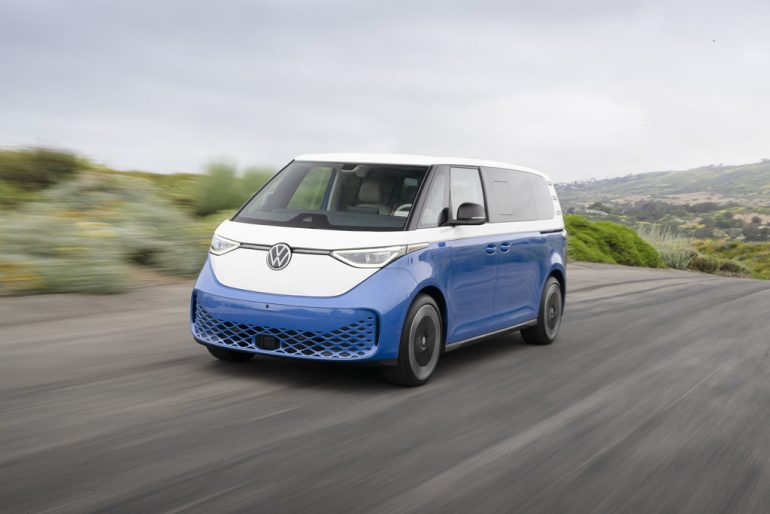
The highly anticipated arrival of the 2025 Volkswagen ID. Buzz in the United States is about to bring a wave of excitement reminiscent of the 1950s, 60s, and 70s VW Bus. Compared to the European version, which has already been test-driven, the North American model is set to impress with its increased size, power, and battery capacity.
One notable enhancement in the all-electric, reimagined VW Bus for the North American market is the addition of a third row of seats. The vehicle’s length has also been extended by a whopping 10 inches, achieved by extending the wheelbase. This results in unique proportions that stand out from the crowd. With an overall length of 192.4 inches, the Buzz is nearly a foot shorter than minivans like the Chrysler Pacifica. However, its wheelbase of 127.5 inches is half a foot longer than that of a Pacifica. This combination of wheels-to-the-corners, a vast wheelbase, and low ground clearance creates a distinctive appearance rarely seen. However, it’s worth noting that certain driveways may pose high-centering issues.
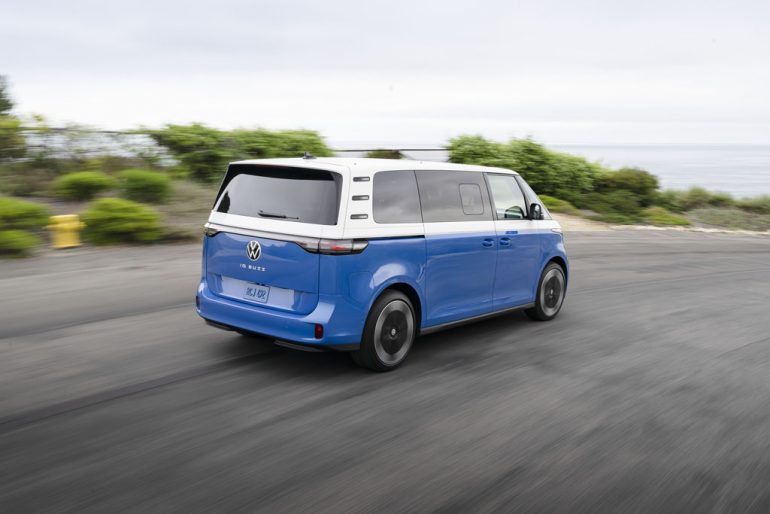
In terms of dimensions, the Buzz measures 77.9 inches wide and 74.6 inches tall, making it 2 inches narrower than a Pacifica but about 5 inches taller. Clearly, this is not your typical minivan.
Despite its unique design, the Buzz’s rear seat functionality may not match that of the other similar vehicles. The third row of seats in the Buzz has seatbelts for only two passengers, making it a seven-passenger vehicle with a three-spot second-row bench or a six-passenger vehicle with captain’s chairs. The second row does not possess any extraordinary minivan tricks either, as it functions similarly to a large three-row crossover. The bench can slide fore and aft by 7.9 inches and recline by 16 degrees.
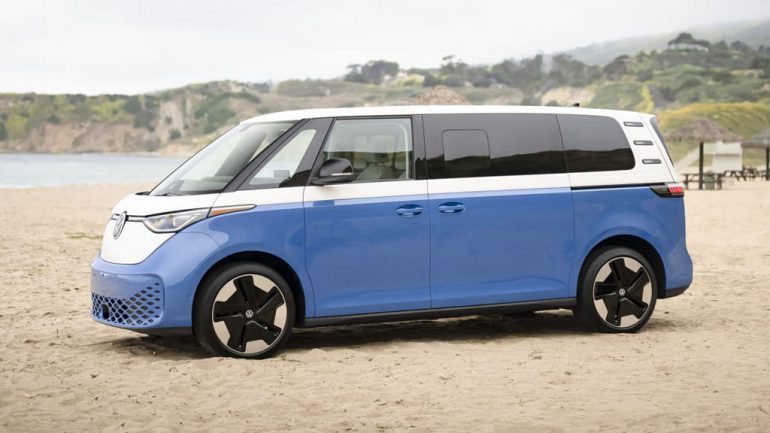
However, the Buzz compensates for its lack of functionality and fancy features with its exceptional space and comfort, particularly in the rear rows. Even as a 6-foot-3 individual, there were at least three inches of legroom between my knees and the second row when it was in its furthest position. Moreover, the seat is mounted incredibly high for a third row, surpassing the height of minivans and full-size SUVs. Access to the third row is made easier thanks to the vast door and clever second-row sliding design. With captain’s chairs, it is even possible to walk from the driver seat all the way to the third row, reminiscent of old-school vans, thanks to the removable center console.
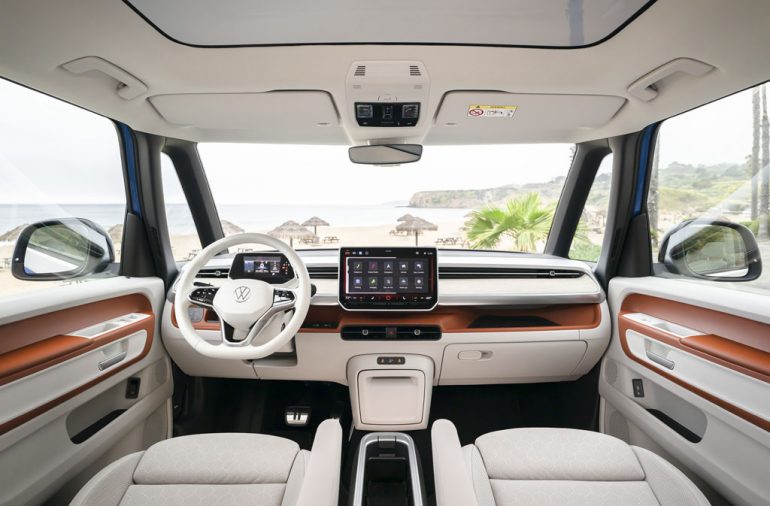
The third row offers such spaciousness that it can be slid forward to create more cargo space, estimated to be around 30 cubic feet, although official figures have not yet been released. All rear seats can be folded flat, but the third row can also be fully removed, a feature that is rare in modern vehicles. By utilizing an available “Flexboard,” the folded third-row seatback can be bridged to create a flat floor, resulting in two additional storage bins below.
To meet the expectations of American consumers who desire bigger performance and range, VW has significantly upgraded the electric powertrain in the Buzz. Following the tradition of the original VW Bus, the motor is located in the back. In the European version and the smaller ID.4, the rear motor provides 201 horsepower and 229 pound-feet of torque. However, the North American three-row ID. Buzz boasts a new rear motor that generates 282 hp and a much more impressive 406 lb-ft of torque.
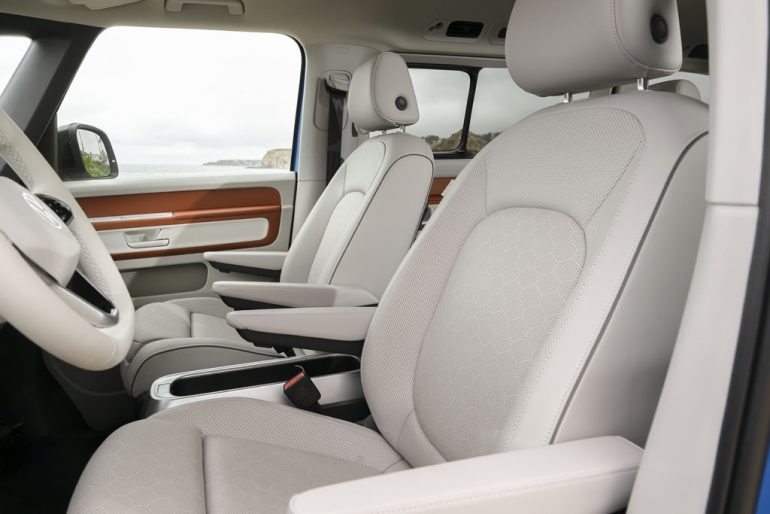
This enhanced performance is achieved through stronger permanent magnets within the rotor, a new stator with a water-cooling jacket, and an improved oil-and-water cooling system. Although VW has not provided the 0-to-60 mph time, the increased power is expected to significantly reduce the Euro Buzz’s 10.2-second 0-100 km/h time, despite the added size.
In contrast to the European version, the North American three-row Buzz will offer the option of all-wheel drive by incorporating a second motor on the front axle. However, VW has only mentioned that this configuration will produce around 330 hp, which is notable but not as substantial as the power increase in some other dual-motor electric vehicles.
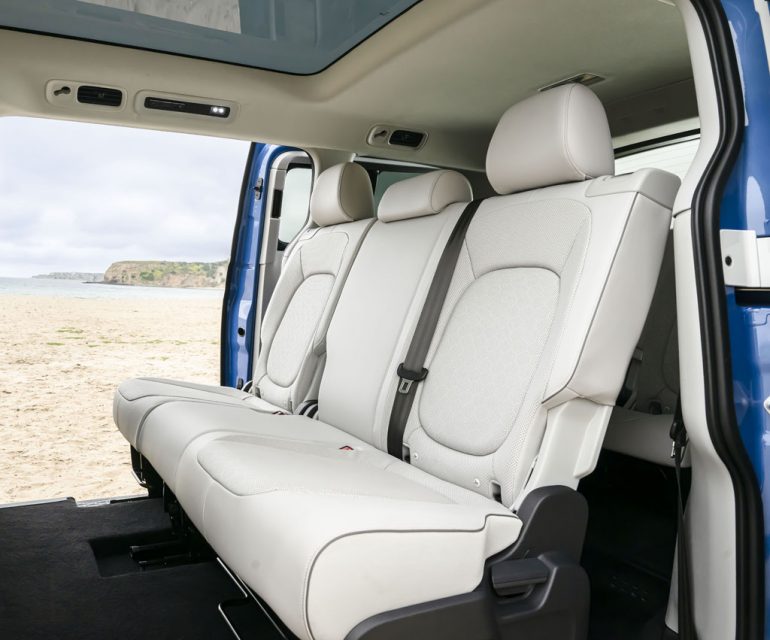
The increased wheelbase of the Buzz not only provides additional interior space but also allows for a larger battery. The capacity has been boosted from 82 kilowatt-hours in the Euro Buzz and ID.4 to 91 kWh. With rear-wheel drive, the Buzz is estimated to achieve approximately 260 miles of range, while the dual-motor variant is expected to offer around 250 miles. These figures are only slightly lower than those of the ID.4, which has a smaller battery capacity, smaller size, and less power.
While the interior design of the Buzz carries over from the European version, the vibrant yellow and orange color options are not available for the North American market. Instead, the most colorful choice is a light gray with orange-like “clay” accents. Other options include light brown seats with yellow piping, gray door inserts, and a wood-look dash, or a dark brown and black combination with blue door inserts and a wood-look dash. The available sunroof is a standout feature, measuring 67.4 inches in length and 40.8 inches in width, making it the largest sunroof in the Volkswagen Group, surpassing even Audi and Bentley. The glass incorporates a polymer-dispersed liquid crystal layer that adjusts its opacity, eliminating the need for a traditional sunshade.
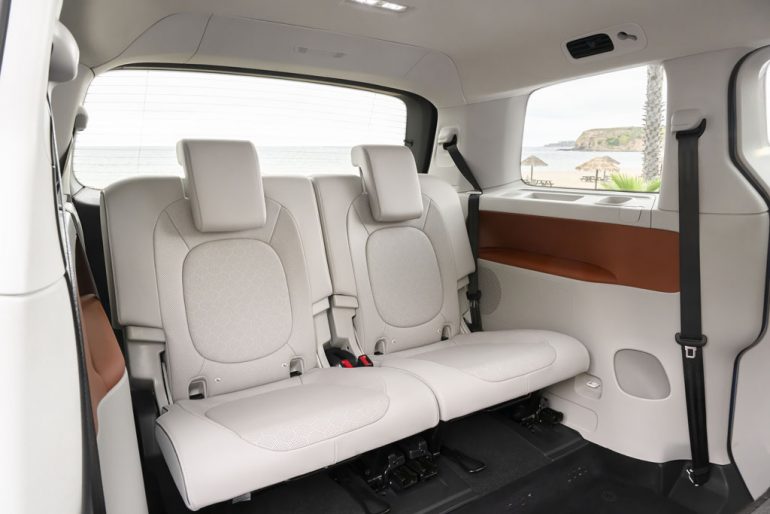
The three-row model of the Buzz offers another unique feature: a power-operated sliding window within the sliding door windows. This is a nod to the original bus design but also a necessity to maintain flush-mounted side glass.
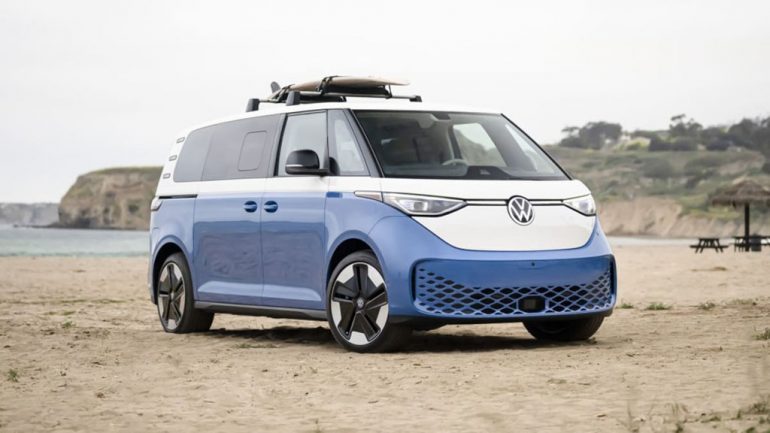
Similar to the upcoming ID.7, the North American Buzz will feature an updated version of VW’s touchscreen infotainment and vehicle control system. The touch sliders are now illuminated, addressing the complaints about the previous omission. Climate functions have been relocated to the bottom of the display, and various menu operations have been docked to improve the system’s functionality. However, further testing will be needed to determine if these updates have resolved the system’s previous issues.
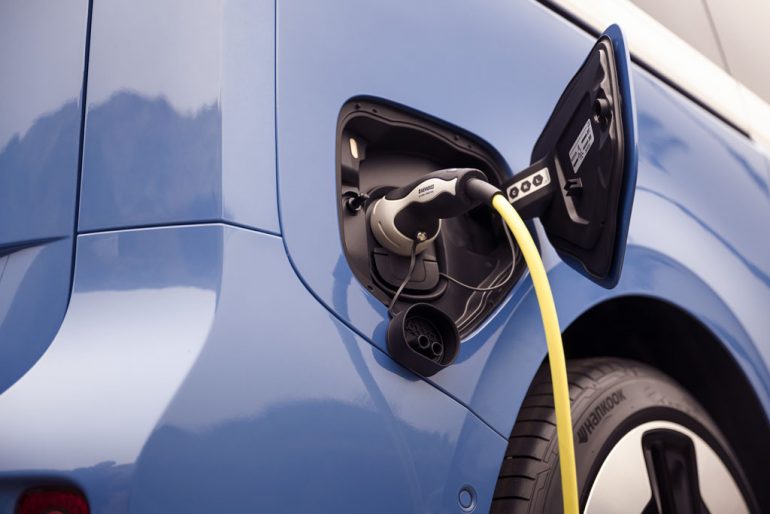
Regrettably, the driver door’s window controls remain unchanged from the ID.4, requiring the driver to press a touch-sensitive “rear” icon to switch control between the front windows and the rear sliders.
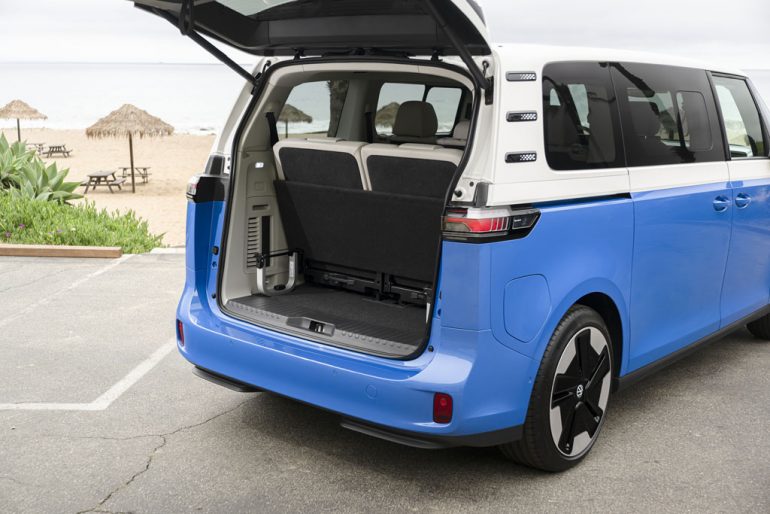
Although pricing has not been announced, the Buzz is unlikely to be an affordable option. As an electric, three-row vehicle with a whimsical design, it is expected to command a premium price. Unlike the ID.4, there won’t be a bare-bones base model available. The Buzz comes equipped with 12-way adjustable, heated, ventilated, and massaging front seats, heated second-row seats, a heated steering wheel, wireless charging, eight USB-C ports, and various driver assistance features.
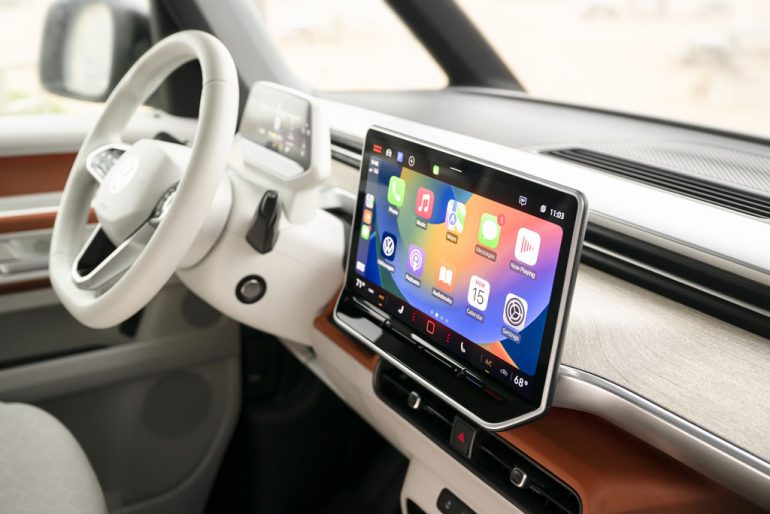
More details, including pricing and range figures, will be revealed closer to the on-sale date, which should be sometime in 2024. Regardless of these specifics, the 2025 VW ID. Buzz is shaping up to be a highly sought-after electric vehicle, and getting on the waiting list early seems like a wise decision.

Malcolm Hogan is the founder and editor of Automotive Addicts, a trusted voice in the automotive media world for over two decades. With 20+ years of hands-on experience covering the industry, Malcolm has built a reputation for delivering honest reviews, sharp insights, and in-depth coverage of everything from new car debuts to high-performance test drives. Passionate about the evolving car culture and staying ahead of the curve, Malcolm continues to lead Automotive Addicts as a go-to destination for enthusiasts and industry insiders alike.